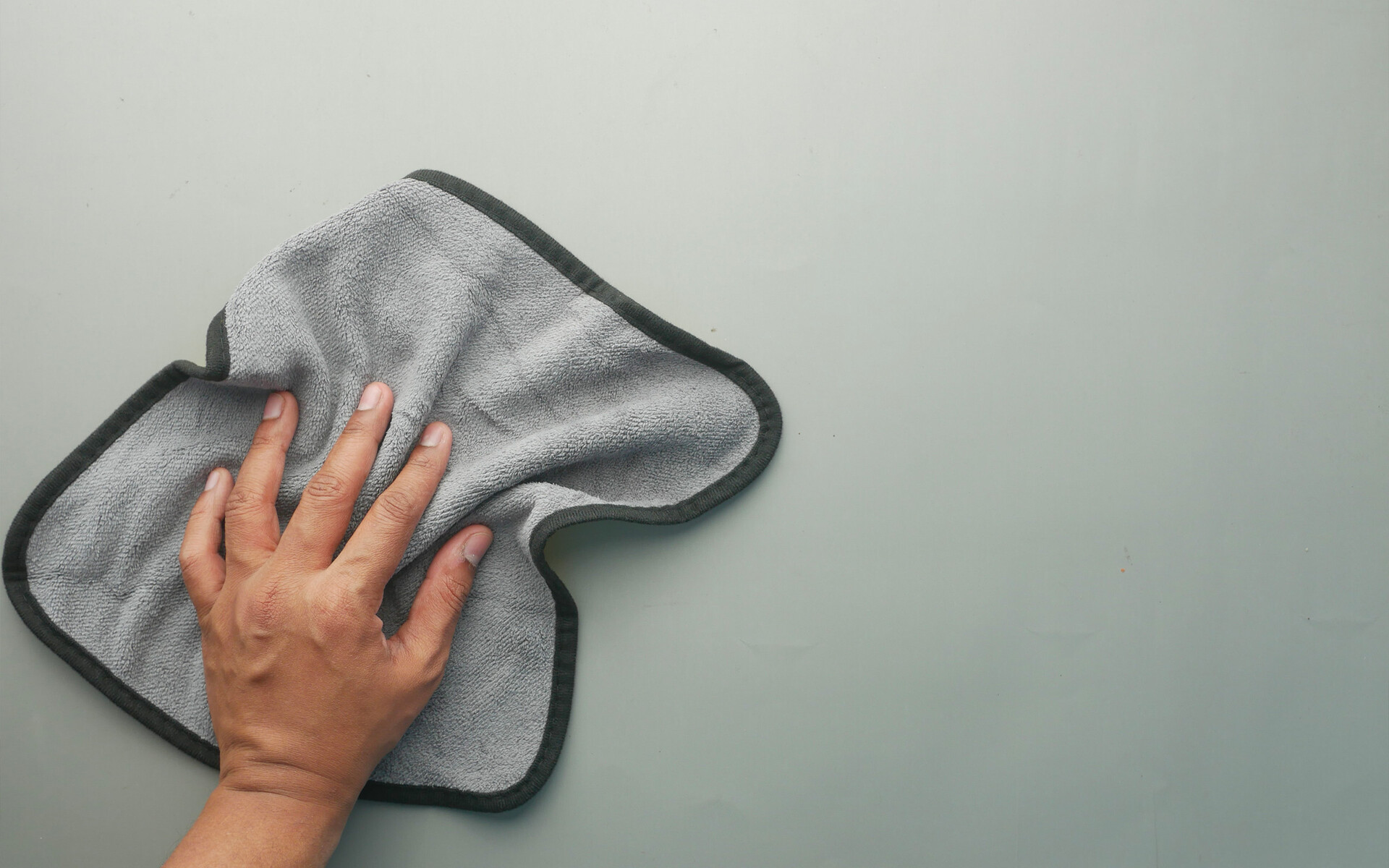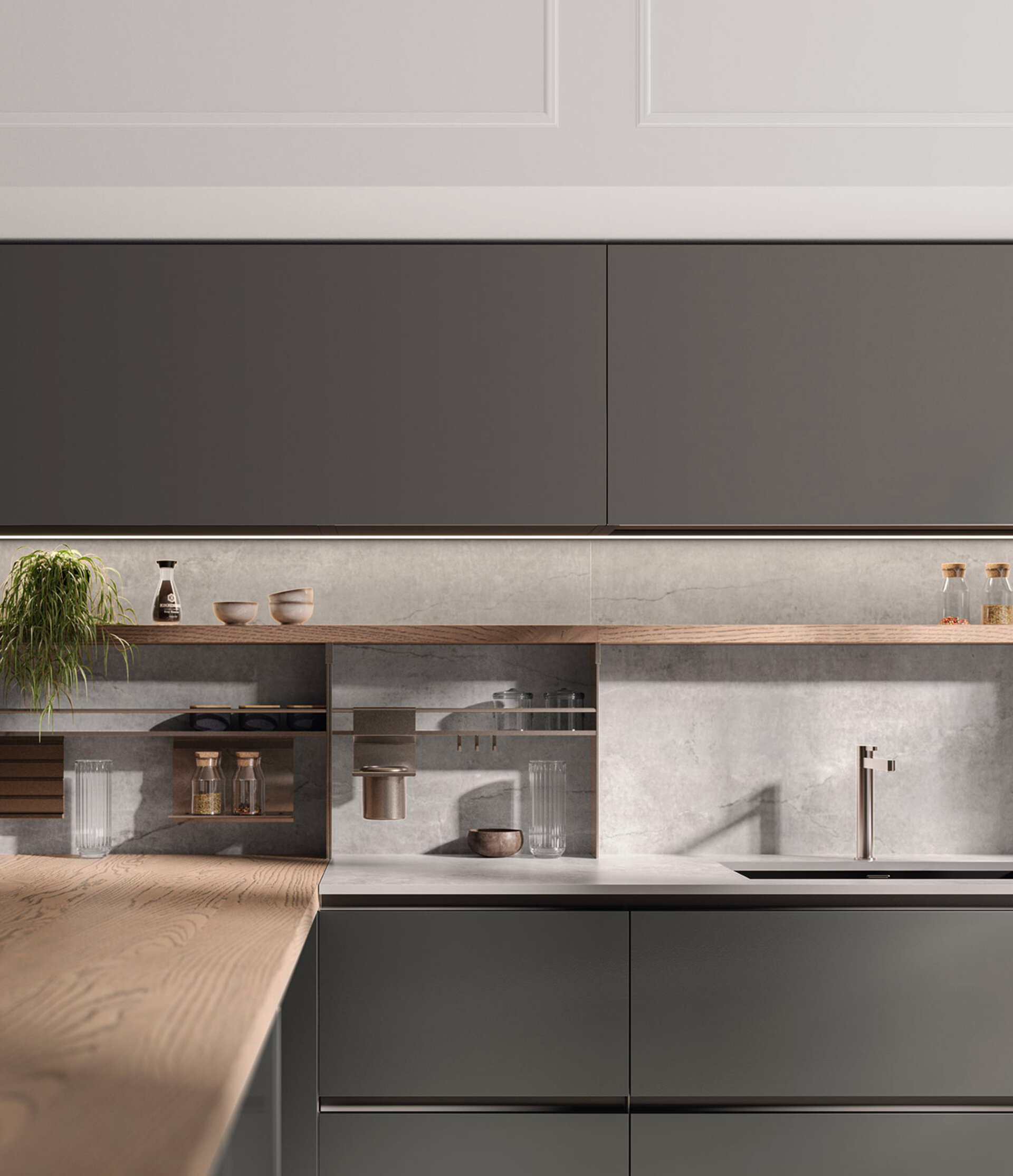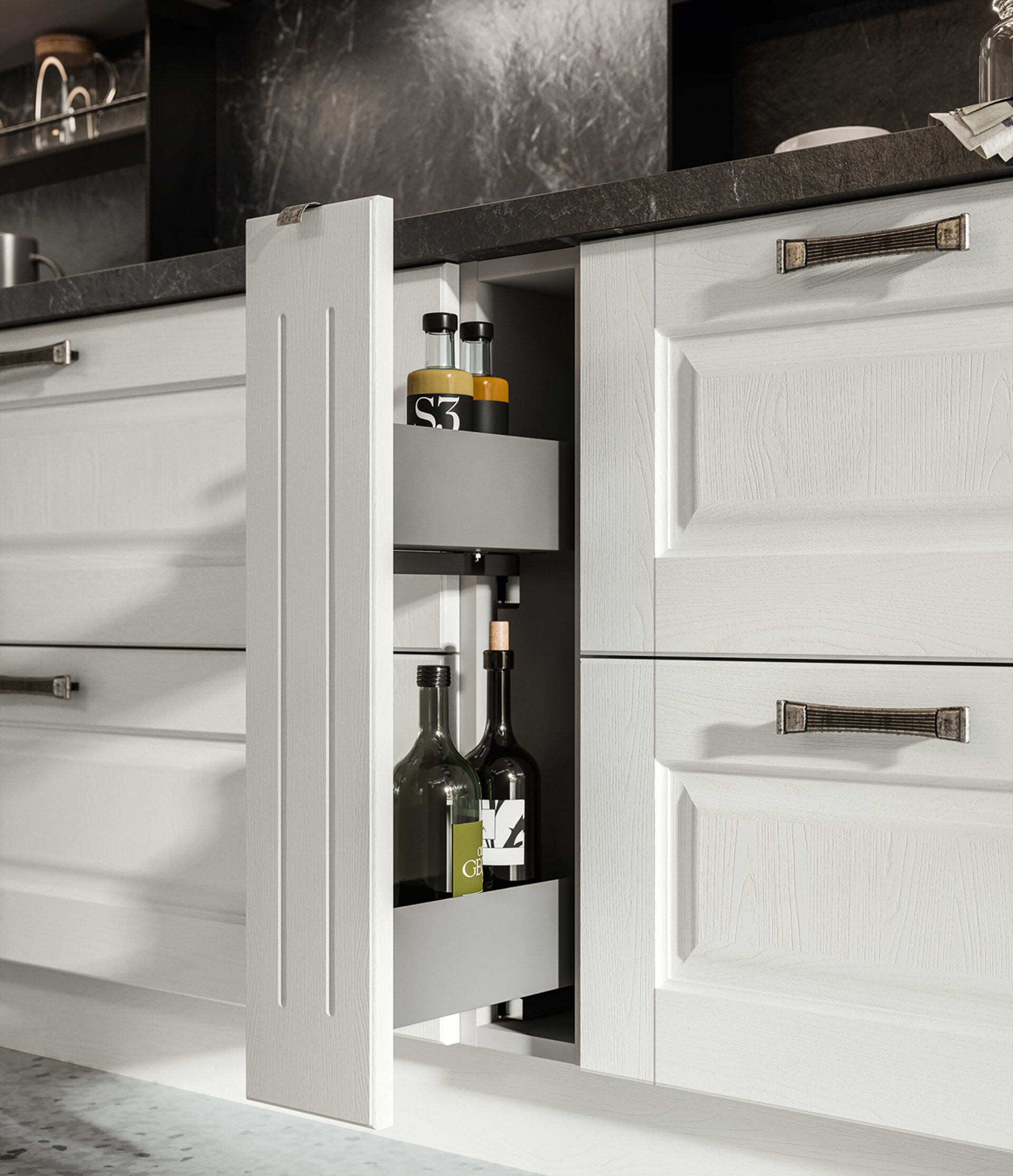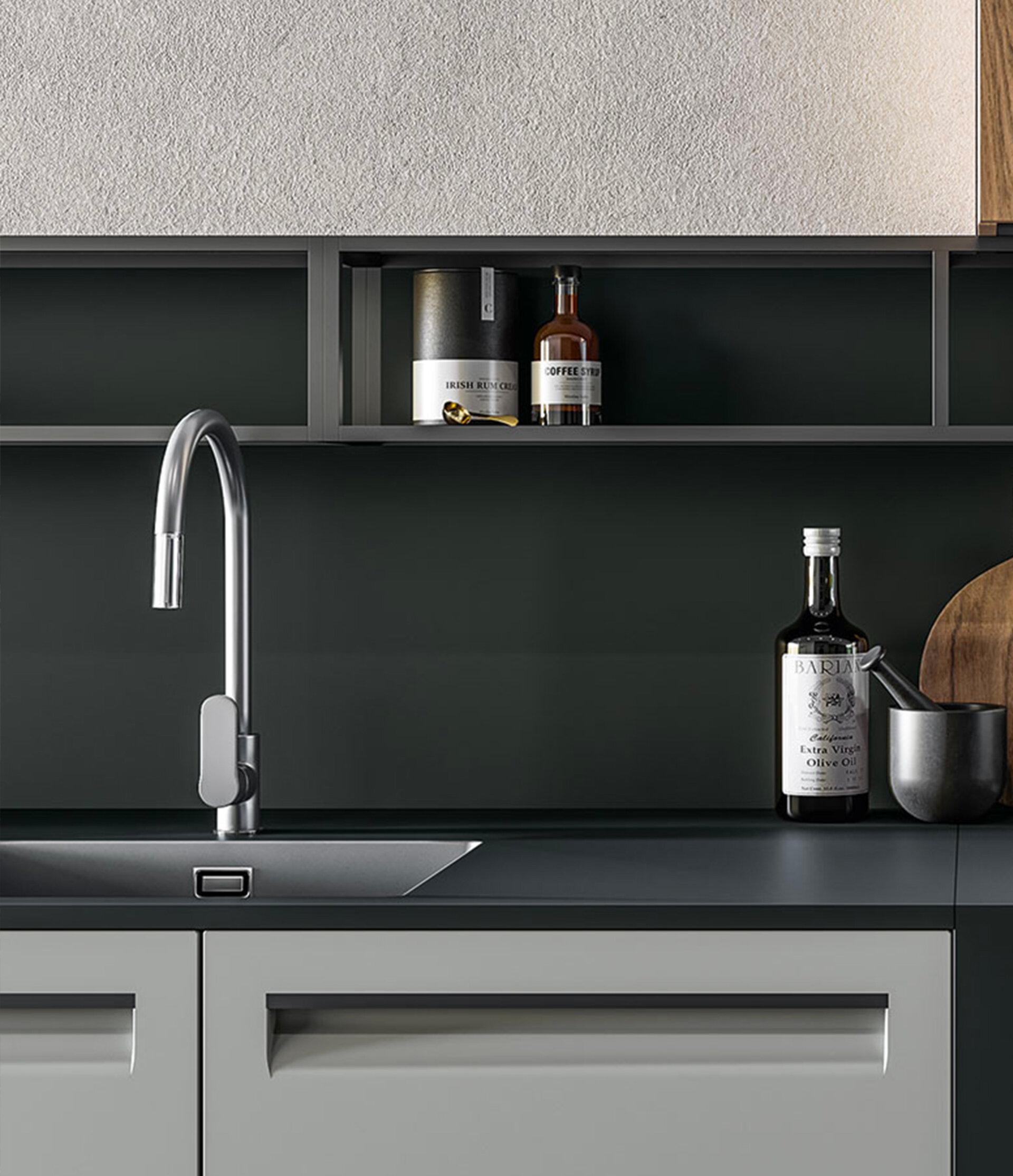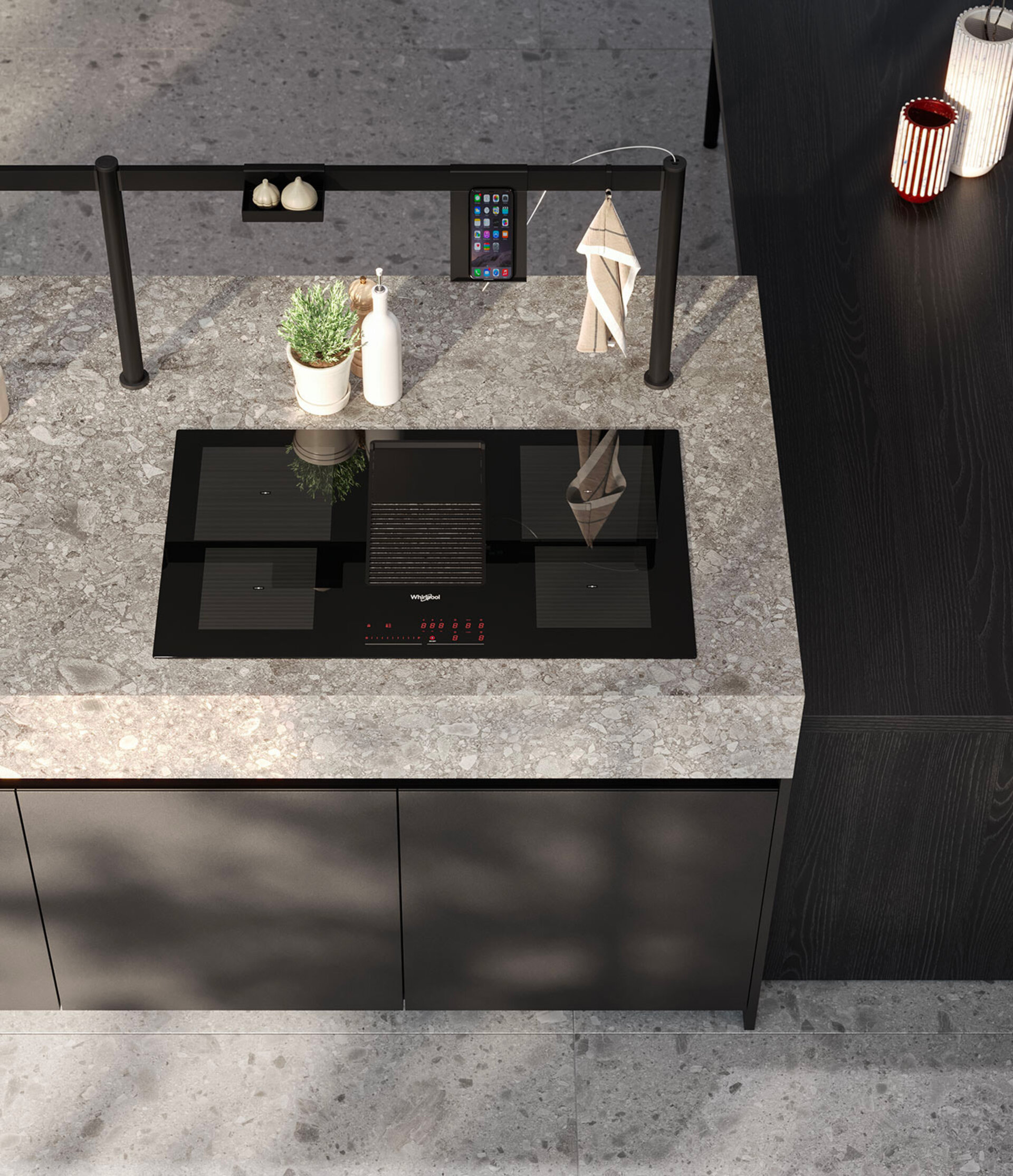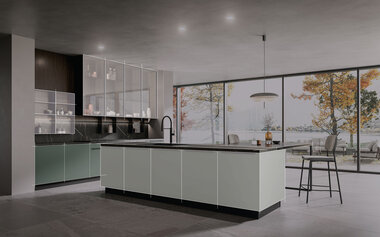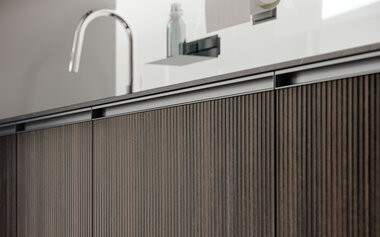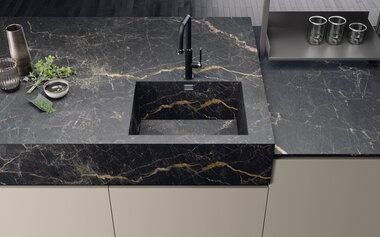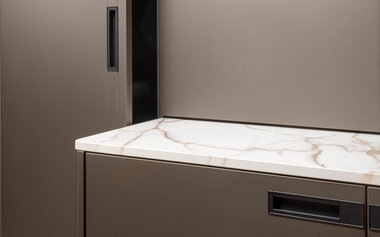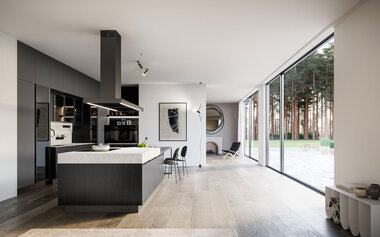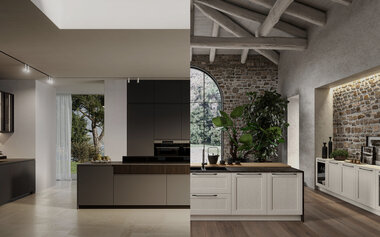Lacquered kitchen
Whether the finish is matt or glossy, a lacquered kitchen surface is easy to clean. You just need to watch out for a few things.
You must get rid of any stains straight away, especially more stubborn ones like oil or grease, but make sure you avoid using sponges or aggressive detergents because they might wreak permanent damage. So, how do you remove stains from lacquered surfaces? Ideally with a soft cloth (one in microfibre, for instance) moistened with warm water in which you have dissolved some mild soap. You must absolutely avoid using products that contain acetone, chlorine, trichloroethylene or ammonia. Don’t underestimate the importance of wiping the detergent off and polishing the surface dry if you want an attractive sheen without streaks. For more in-depth information about cleaning lacquered kitchens, we recommend that your read this piece of news.

